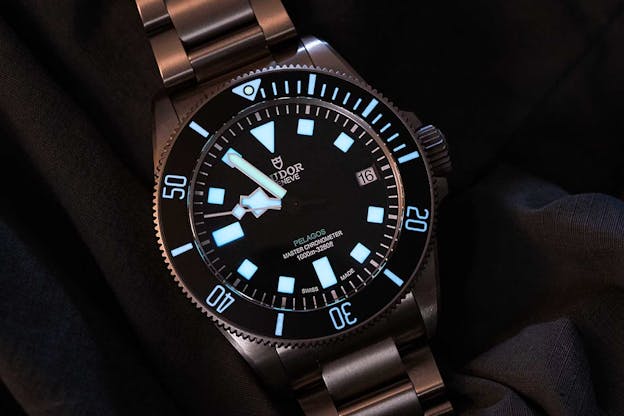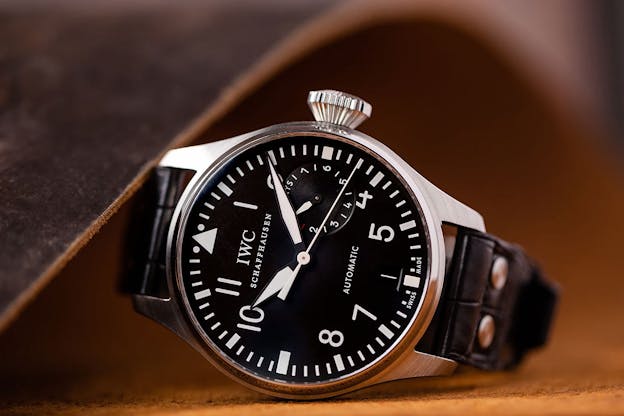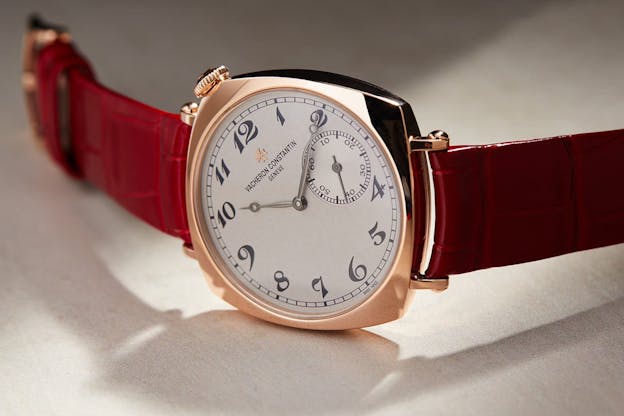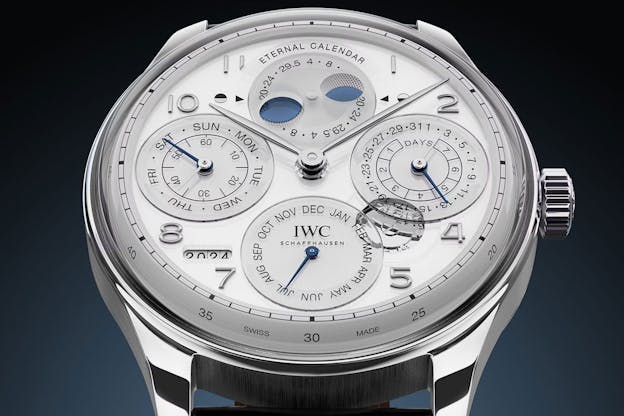Too Good To Be True: Watchmaking Myths That Refuse To Die
Never let the facts get in the way of a good story.
The genesis of this story was a reaction to a video we put up a month or so ago, the subject of which was debunking myths about water resistance. Among the usual suspects (one of which is the idea that 100 meter resistance isn’t enough for swimming, which is a little hard to understand when the depth limit for recreational scuba is 40 meters, and dive computers from brands like Suunto and Garmin have 100 meter water resistance) was the idea of “dynamic water pressure.” This is the notion that static water pressure ratings are not meaningful in real life scenarios like swimming or diving, since physical motion in the water supposedly produces much higher pressure on the case than depth alone. In one of the comments a viewer remarked angrily that, “just because dynamic water resistance isn’t part of your life doesn’t mean it isn’t part of anyone’s life.” This made me ashamed as while in fact, I can swim, I certainly don’t dive, or surf, or do anything where dynamic water pressure might be an issue. I began to wonder therefore just how bad real dynamic water pressure could be.
This in turn led me to wonder what some other misunderstandings there are out there, which are still repeated with any frequency and including dynamic water pressure, I came up with a few more. While it is true that some myths seem to have been finally laid to rest (I don’t think anyone has seriously suggested that the Cartier Crash was inspired by a Baignoire that was half melted in a fiery auto accident in at least the last few years) here are a few which still seem to be hanging on – often, as you’ll see, for understandable reasons.
Myth 1: Turns Out Dynamic Water Pressure Is Still Not A Thing.
I decided to first take another look at the idea that moving your arm through the water increases water pressure, which meant fact-checking some of my past assertions on the subject. Now as in the past, several people have been dilligent enough to do the actual calculation, like this guy. As it turns out, to raise the pressure on your watch you would have to be moving your arm at a little over thirty miles an hour; the OP writes in part:
“Doing the math, you can see that in order to raise the pressure by 1 atm the watch must be traveling at 14.25 m/s. That’s about 51 km/h or 32 mph.
If you can get your arms to move that fast under water, please see your local Olympic committee, you are a due for some swimming medals this summer in London.”

I would be remiss if I did not point out that in fluid dynamics, the terms static pressure, and dynamic pressure mean specific things technically; they are related by the term “stagnation pressure.” There are several great videos that explain the relationships; here’s just one. Dynamic pressure absolutely exists, which is a point which may sometimes get lost in the conversation; the question is, does it occur at high enough pressures to be a significant issue when wearing a water resistant watch under plausible swimming or diving conditions. The answer to this question seems to be no. I got curious about what sorts of dynamic pressure might be experienced in surfing, by the way; water is heavy, and when it’s moving, it’s nearly impossible to resist.

Surfer Today, who should know, says that a breaking wave can exert pressures between 250 to 6000 pounds per square foot. These are scary numbers, but 6000 pounds per square foot is equal to 41.7 pounds per square inch, rounded up, and that is equal to 2.8 atmospheres (one ATM is 14.7 pounds per square inch). 2.8 atmospheres is a relatively mild 20.8 meters and so it would seem the dynamic pressures in surfing should not be an issue for a properly sealed watch. A very informal look at a Reddit thread where surfers comment on the watches they wear, would seem to bear this out; some folks think wearing a watch while surfing is antithetical to the free spirited vibe of the sport, but there are plenty of Apple Watches, G-Shocks, a few mechanicals, and more than one Casio F91-W in there, as well as some smart watches specifically designed for the sport. The biggest problem with wearing a watch while surfing seems to be the off chance that your watch will get pulled off your wrist, not that dynamic water pressure will defeat the gaskets.
If you are wondering about diving into the water, diving off a 10 meter platform produces impact speeds in the range of 30 to 35 mph, so once again, while there is a dynamic pressure spike, it is a trivial one (and moreover, as with surfing, you are adding the dynamic pressure only to standard sea level atmospheric pressure, or one atmosphere/14.7 pounds per square inch.
Myth No. 2: Inner Antimagnetic Cases Are Not Faraday Cages.
As with dynamic water pressure, this one seems to persist because it sounds plausible and the reasons why it’s not true, are not especially lucid. Chris James Hall in a recent AMA on his Substack, tackled the question of antimagnetic watches and he rightly makes the point that magnetism is confusing:
“There are multiple qualities that one can measure – magnetic field strength, magnetic flux and magnetic flux density being the main ones – and each has its own unit. Did you know that the gauss, so commonly used in watch terminology, is not the official SI unit of magnetic flux density? We should really be talking about the Tesla, which is calibrated to a scale ten thousand times larger (i.e. one Tesla = 10,000 gauss). A gauss is one maxwell per square centimetre; a maxwell is 10 to the power -8 of a weber, which is the SI unit for magnetic flux.”
I don’t know about you but I’ve never seen a single watch brand talk about webers in the context of antimagnetic watches and if anyone can ever find one I will eat my least tasty hat. Also confusing is the fact that an electric charge in motion (current through a wire, for instance) generates a magnetic field, and a magnet in motion can generate an electric current (electric motors and electric generators take advantage of this relationship) so it’s not like the two aren’t related.

The easiest way to think about all this is to ask what a Faraday cage is. A Faraday cage, named after Michael Faraday, who constructed the first one in 1836, is an enclosure that blocks electromagnetic radiation, like radio waves – you can construct rooms that are Faraday cages, to discourage electronic eavesdropping, such a room is called a SCIF (Sensitive Compartmented Information Facility). More larcenously, you can also make what’s called a “booster bag” – a shoplifter’s tool, which is a shopping bag lined with aluminum foil that will keep RIFD price tages from working. Faraday cages, however, do not block static or slow moving magnetic fields; a compass will still work inside one.
Soft iron/mu metal inner cases don’t block or absorb magnetic fields. Such cases are made of materials with very low resistance to magnetic fields, and magnetic field lines tend to flow through them, instead of through the sensitive components of the movement. This is one of those pieces of info which is great for, “well ACTUALLY,” moments with your watch buddies.
Myth 3: Driver’s Watches Were Mostly Never Actually Driver’s Watches.
Here we are looking at the idea that certain types of watches were designed to be more legible than a conventional watch, when worn on the left wrist of a person at the wheel of a car. I’m genuinely not sure where this one came from – the first watches I can remember being referred to as driver’s watches were a couple that Parmigiani made in partnership with Bugatti, like the Type 370, which was originally released in 2005. The most famous example of a watch that got called a “driver’s watch” and which is still reflexively referred to as one, despite the fact that its manufacturer has repeatedly said it isn’t, is the Vacheron Les Historiques American 1921, and then, there are watches that were made with dials on the side of the case, like the Amida Digi-Trend and the Bulova Rite-Angle.
The reality is that in most cases, these designs had nothing to do with drivers or driving. The offset crown watches, which were produced by Vacheron, but also several other companies, during World War I and into the 1920s, were as a class a way of adapting pocket watch movements with the crown at 12:00, for wear on the wrist. Stan Czubernat, a watchmaker and watch historian, has this to say on the subject:
“When the offset crown cases were made during the early years of WW1 they were NOT called ‘driver’s watches’ … The reason these offset crown trench watches originally came to be is because of the American war effort. Your standard American made hunting case configuration movements were mostly being used up for military watches (size 3/0s and 0s). There was in fact a shortage. But, there was an abundance of American made open face configuration movements with the crown at the 12 o’clock position. So, the American case manufacturers like Philadelphia, Keystone, Bates & Bacon, Star and Illinois only had to make a slight change during their manufacturing process to produces offset crown cases that would nicely accommodate open face style movements. By doing so, this drastically increased the number of military style trench watches that would be available to our men going to France … The Americans started making offset crown trench watches in 1915.”

Things are less cut and dried with angled and side dialed watches – several of these, like the Marvin Motorist, were in fact billed as driver’s watches. The designs died out rather quickly, though, as they generally had small dials which in real life, were actually harder to read than just an ordinary wristwatch, and side display watches like the Girard-Perregaux Casquette and Amida Digi-Trend were marketed simply as exercises in space age design, not as driver’s watches. And as they were so hard to read, actually trying to use one while driving could potentially have been extremely hazardous.
Myth 4: The Flying Tourbillon Was Not Invented By Alfred Helwig, In Glashütte.
This is another one where you could forgive a person for making a mistake – I for one would still be saying that the flying tourbillon was invented in 1920, in Glashütte, at the Watchmaking School, by Alfred Helwig, if not for the fact that a few years ago, a reader got in touch with me to point out that there was a patent for a flying tourbillon which had been granted to an Englishman named Robert Benson North, sixteen years ahead of Helwig, in 1904. The reason North’s patent and his invention still languish in obscurity is partly because it has been accepted wisdom for so long that the flying tourbillon was Helwig’s invention, that it’s an uphill battle to say the least to convince people otherwise; the second problem is that North’s invention doesn’t look like a tourbillon, but rather, a karrusel; the third problem is that Helwig did, in fact, invent the flying tourbillon in the configuration in which we know it today.

North’s invention nevertheless, fits all the requirements of a flying tourbillon. Its status as a tourbillon is based on the fact that the balance, balance spring, and escapement, as well as the escape wheel and fourth wheel, revolve on a platform around a fixed third wheel. Most of the time, tourbillons rotate around a fixed fourth wheel, with the escape wheel pinion on the tourbillon carriage working against the fixed fourth wheel teeth; in North’s patent, however, the fourth wheel is on the carriage, and its pinion is driven as it works against the fixed third wheel. This is an unusual but not unheard of arrangement (Breguet used it in some of his tourbillons) and the defining feature of a tourbillon is that one of the going train wheels is fixed, with a downstream wheel (usually the escape wheel; in this case, the fourth wheel) driven as it rotates around the fixed gear teeth.
(I remember once getting chewed out by Carole Forestier-Kasapi when she was at Cartier, when I insisted that a tourbillon must have a fixed fourth wheel specifically. When you’re wrong, you’re wrong).

Aside from the fact that North’s invention doesn’t look like what we’ve come to think a flying tourbillon should look like, to understand it, you have to first know how a tourbillon works, and then you have to know how a karrusel works (briefly, there’s no fixed train wheel in a karrusel, although it does have the balance, balance spring, escapement, and a driving wheel for the escape wheel on a rotating platform) and then you have to understand how North’s invention works. North’s flying tourbillon fits the definition of a flying tourbillon perfectly – it is a true tourbillon, with no upper bridge for the carriage – but I doubt he will ever get much more for his ingenuity than a very occasional footnote in horological writing. But he was as far as I can tell, the actual inventor of the flying tourbillon and to quote Death of a Salesman, attention must be paid.
Watches were being made with flying tourbillons based on North’s design prior to the patent grant, by the way; here’s one from 1902. He was one of the most important figures in British watchmaking in the early 20th century; in October 1922 North was appointed Director and Chairman of Charles Frodsham & Co., Ltd.
Bonus Round: The Perpetual Calendar Does Not Follow The Rules Of The Gregorian Calendar (Or At Least, Most Of Them Don’t)
Last but not least, is a mistake which is just about universal (it did not even occur to me that saying a perpetual calendar watch is programmed to follow the rules of the Gregorian Calendar is incorrect until about four, maybe five months ago. Got there in the end though).
Here’s the thing. Most perpetual calendar watches account for the Leap Year, which occurs once every four years; a Leap Year is one in which an extra day is added in February. You have to do this, because a year – the amount of time it takes for the Earth to go once around the Sun – is not a whole number of days. An approximation is that a year is actually 365.25 days, so in four years, you have built up a whole day’s error.
The only problem is that 365.25 is not completely accurate either. By the mid-16th century, when the Gregorian calendar reform went into effect, a total of ten extra days had accumulated. The calendar was reset and the Gregorian calendar, which is based on a year of 364.2425 days, went into effect. The Gregorian calendar includes a rule for any year divisible by 100 (normally such years would be Leap Years but you skip a Leap Year in such years in the Gregorian Calendar) and 400 (normally by the 100 year rule, you would skip a Leap Year in such a year, but in the Gregorian Calendar, you add the Leap Year back in).
The upshot of all this is that any watch that only follows the four year, but not the 100 and 400 year rules, is not a Gregorian calendar; it is at most, a Julian Calendar watch. The only actual Gregorian calendar watch is one that encodes the four, 100, and 400 year rules. Even so called secular perpetual calendars usually omit the 400 year rule; one that does not, is the IWC Eternal Calendar.

Of course the whole thing is ultimately an exercise in futility, like all calendar reform. The Earth’s orbit is not completely stable and will inevitably drift out of synchronization with the Gregorian calendar as well – maybe as soon as the year 4,000. Making a watch that is a true microcosm of orbital mechanics is inherently impossible, but perhaps it reflects credit on horology that it keeps trying.

